Introduction
Wontons, a beloved staple of Chinese cuisine, have transcended cultural boundaries to become a global favorite. These delicate dumplings, often filled with a savory mixture of meat and vegetables, are cherished for their versatility and comforting flavors. Whether served in a fragrant broth, pan-fried to golden perfection, or steamed and drizzled with sauce, wontons offer a culinary experience that is both satisfying and deeply satisfying. This article will guide you through the art of crafting vegetable and meat wontons from scratch, ensuring that every bite bursts with harmony and flavor. From selecting the finest ingredients to mastering the intricate folding techniques, we will explore every facet of this timeless dish.
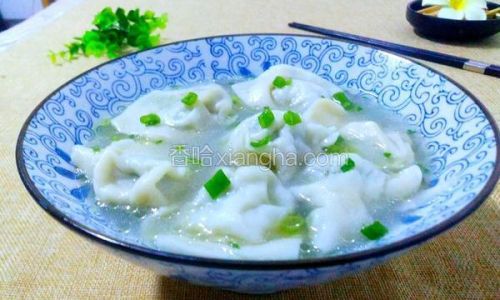
The History and Cultural Significance of Wontons
Before diving into the recipe, it is essential to appreciate the cultural tapestry that wontons represent. Originating in northern China over 1,800 years ago, wontons were initially associated with winter solstice celebrations, symbolizing wealth and prosperity. The name “wonton” itself is derived from the Chinese term for “irregularly shaped pasta,” reflecting their unique form. Over centuries, wontons evolved into a symbol of unity, often shared among families during festivals and gatherings. Today, they are enjoyed worldwide, with regional variations showcasing local ingredients and preferences.
Ingredients: Assembling the Building Blocks
Creating the perfect wonton begins with sourcing high-quality ingredients. The balance of meat and vegetables is crucial, as is the freshness of aromatics and seasonings. Below is a comprehensive list of components needed for approximately 50 wontons:
For the Filling:
- 300g ground pork (preferably with 20% fat for juiciness)
- 1 cup finely chopped napa cabbage (or Chinese cabbage)
- ½ cup grated carrots
- ½ cup rehydrated wood ear mushrooms, minced
- 3 green onions, thinly sliced
- 2 garlic cloves, minced
- 1 tbsp fresh ginger, grated
- 1 tbsp soy sauce
- 1 tsp sesame oil
- 1 tsp rice vinegar
- 1 tsp sugar
- 1 tsp white pepper
- 1 egg white (for binding)
- 1 tbsp cornstarch
- Salt to taste
For the Wrappers:
- 2 cups all-purpose flour
- ½ cup warm water
- 1 tsp salt
- Optional: 1 egg yolk (for added richness)
For Cooking and Serving:
- 8 cups chicken or vegetable broth
- 2 tbsp soy sauce
- 1 tbsp sesame oil
- Fresh cilantro, chopped
- Fried garlic chips
- Chili oil (for heat enthusiasts)
Preparing the Filling: A Symphony of Flavors
The filling is the heart of the wonton, and achieving the ideal texture and taste requires careful preparation. Begin by salting the cabbage: sprinkle 1 tsp of salt over the chopped cabbage, massage gently, and let it sit for 10 minutes. This step removes excess moisture, preventing the filling from becoming soggy. Squeeze out the liquid thoroughly and set the cabbage aside.
In a large mixing bowl, combine the ground pork, mushrooms, carrots, green onions, garlic, and ginger. Add the soy sauce, sesame oil, rice vinegar, sugar, white pepper, and a pinch of salt. Using your hands or a wooden spoon, mix vigorously until the ingredients are uniformly combined. This process, known as “velveting,” ensures the meat remains tender and absorbs the flavors of the seasonings.
Introduce the egg white and cornstarch to the mixture. The egg white acts as a binder, while cornstarch thickens the filling slightly, preventing it from separating during cooking. Continue mixing until the mixture develops a sticky consistency. Finally, fold in the drained cabbage, ensuring even distribution. Cover the bowl and refrigerate for at least 30 minutes to allow the flavors to meld.
Crafting the Wrappers: The Foundation of Perfection
While store-bought wonton wrappers are convenient, homemade dough elevates the dish to new heights. In a large bowl, whisk together the flour and salt. Create a well in the center and gradually pour in the warm water, stirring with chopsticks until a shaggy dough forms. Knead the dough on a lightly floured surface for 8–10 minutes until smooth and elastic. Wrap the dough in plastic wrap and let it rest for 30 minutes. This resting period relaxes the gluten, making the dough easier to roll.
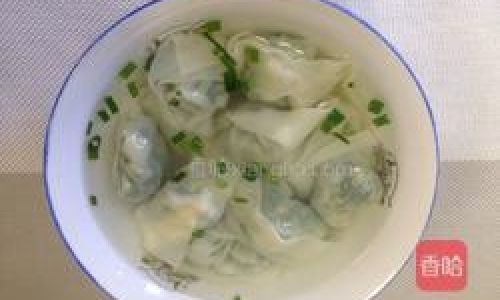
Divide the dough into four equal portions. Working with one portion at a time (keep the others covered to prevent drying), roll the dough into a thin cylinder. Cut the cylinder into 1-inch pieces, then flatten each piece with your palm. Using a small rolling pin, roll each disk into a 3.5-inch circle, ensuring the edges are thinner than the center. This thickness variation helps the wontons seal properly and cook evenly.
Folding Techniques: Mastering the Art of Encapsulation
The way you fold wontons not only affects their appearance but also their texture during cooking. Here are three popular methods:
-
The Classic Nurse’s Cap Fold:
- Place a teaspoon of filling in the center of the wrapper.
- Dip your finger in water and moisten the edges of the wrapper.
- Fold the wrapper diagonally to form a triangle, pressing out air pockets.
- Bring the two longest corners together, moistening one end to seal.
-
The Ingot Fold (Symbolizing Wealth):
- After forming the triangle, fold the two shorter corners inward.
- Press the edges firmly to create a crescent shape resembling an ancient Chinese ingot.
-
The Open-Faced Style (For Steaming):
- Leave one corner unsealed after the initial triangle fold.
- This allows steam to circulate, resulting in a softer texture.
Regardless of the method, ensure the wontons are tightly sealed to prevent bursting during cooking.
Cooking Methods: Boiling, Frying, and Steaming
Wontons are incredibly versatile, adapting to various cooking techniques:
-
Boiling: Bring a large pot of water to a rolling boil. Gently add the wontons, stirring to prevent sticking. Cook for 4–5 minutes until they float to the surface. Drain and serve in broth.
-
Pan-Frying: Heat 2 tbsp of oil in a non-stick skillet. Arrange wontons in a single layer and fry until golden on one side. Add ¼ cup of water, cover, and steam for 5 minutes. Uncover and fry until crispy.
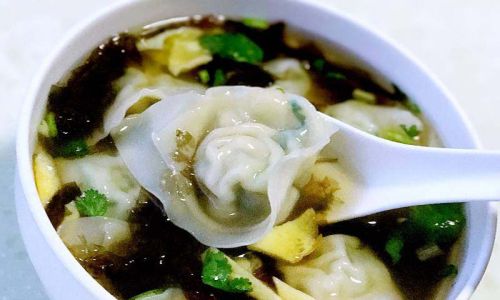
-
Steaming: Line a bamboo steamer with parchment paper. Arrange wontons 1 inch apart and steam for 10–12 minutes. Serve with dipping sauce.
Serving Suggestions: Elevating the Experience
The presentation of wontons is as important as their taste. For a traditional soup, combine broth, soy sauce, and sesame oil in a bowl. Add the boiled wontons and garnish with cilantro, fried garlic, and a drizzle of chili oil. For a crispy contrast, serve pan-fried wontons with a black vinegar dipping sauce. Vegetarian variations can substitute the meat with finely chopped tofu or textured vegetable protein (TVP), marinated in the same seasonings.
Troubleshooting Common Pitfalls
- Soggy Wrappers: Ensure the filling is not overly wet. If using high-moisture vegetables, salt and drain them thoroughly.
- Tough Dough: Over-kneading or insufficient resting time can make wrappers chewy. Let the dough rest as directed.
- Burst Wontons: Avoid overfilling; use no more than 1.5 teaspoons of filling per wrapper.
- Uneven Cooking: Maintain a consistent boil and avoid overcrowding the pot.
Storage and Reheating Tips
Leftover wontons can be frozen for up to three months. Arrange them on a baking sheet, freeze until solid, then transfer to a zip-top bag. To reheat, boil from frozen for 6–7 minutes or pan-fry without thawing.
Conclusion: The Joy of Homemade Wontons
Crafting vegetable and meat wontons is a labor of love that rewards you with a dish brimming with tradition and flavor. Whether you’re hosting a dinner party or seeking a comforting meal, these dumplings offer endless possibilities for customization. Experiment with fillings, dipping sauces, and cooking methods to discover your signature style. As you gather around the table to share these delicate morsels, remember that you’re not just savoring a meal—you’re participating in a centuries-old ritual of connection and culinary artistry.
Final Thoughts
Mastering wontons is a journey that blends technique with creativity. With patience and practice, you’ll soon find yourself effortlessly folding wrappers and concocting fillings that delight the senses. So, roll up your sleeves, dust your workspace with flour, and embark on this delicious adventure. Your taste buds—and your loved ones—will thank you.
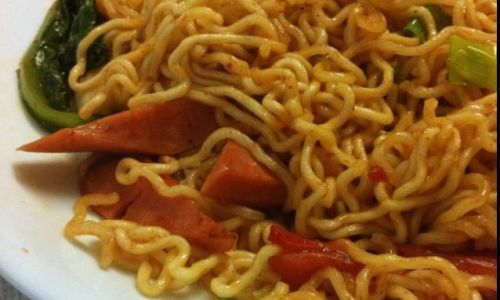
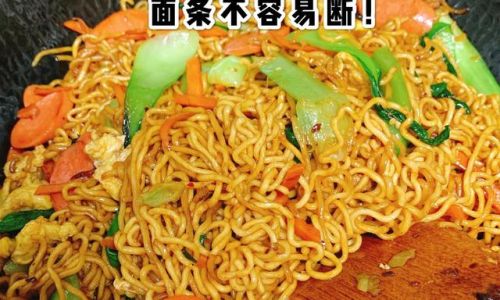
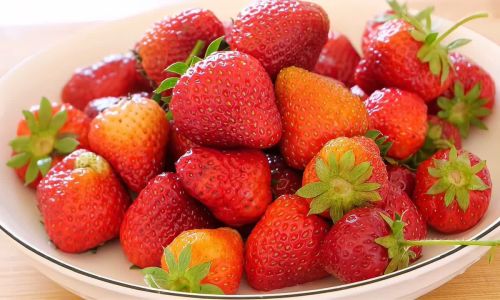


0 comments